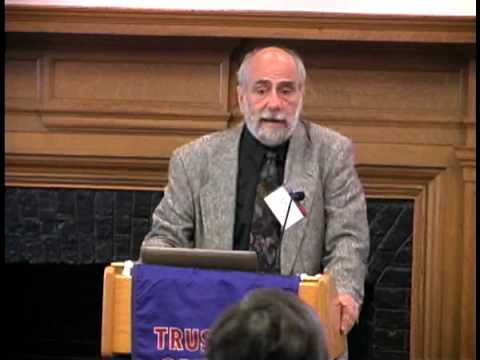 Paul Rozin, Department of Psychology, University of Pennsylvania
Paul Rozin, Department of Psychology, University of Pennsylvania
There has been a major increase in interest in the emotion of disgust over the last decade, especially in neuroscience and evolutionary psychology, and this has substantially enriched our understanding. I focus here on the evolutionary psychology of disgust, which involves determining its adaptive value in our ancestral environment, and on the construction of the history of disgust over evolutionary time (Rozin & Schull, 1988). Generally speaking, the creation of a convincing origin story for a trait, which is usually a consequence of the adaptive value, is exceedingly difficult. We just do not have good detailed records of human behaviors or mental events during the long course of human evolution. We almost always have to infer an origin, rather than demonstrate it.
The critical inference, for biological evolution, is that there is a genetic basis for the feature in question, such that natural selection could operate upon it. The four primary types of evidence that may be available to assign a genetic origin to a human feature are: (1) It is present at birth or very soon thereafter; (2) It is present in non-human primates; (3) We can establish genetic origins by mapping a path from genes to the feature in question; (4) We can establish a possible role for genes by showing some heritability for the trait in question. This is commonly done with twin studies, which generally indicate modest to substantial heritability for the traits usually measured by psychologists. But accounting for variance (heritability) does not demonstrate that the basic core feature is itself inherited. It simply shows that genes can work to moderate expression. Thus, reading abilities are to some degree heritable, but writing, the critical base for reading, is acquired and not inherited.
Tybur and his colleagues (2012) and Curtis (2013) have made forceful arguments that disgust evolved biologically, originally to protect humans from pathogens. The evidence is clear that disgust does serve such a function in contemporary humans, and presumably in whatever ancestors had disgust reactions (Oaten, Stevenson & Case, 2009, Tybur et al, 2012, Curtis, 2013). The two most convincing pieces of adaptive evidence are (1) the avoidance by humans of entities which have a higher probability of microbial contamination (Curtis, 2013; Tybur et al., 2013) and (2) the apparently universal contamination response in humans over about 4 years of age (Rozin & Nemeroff, 2002). That is, all normal humans (above 4 years of age) tested avoid objects that have touched something disgusting. This is exactly what one would expect for a system designed to avoid microbial contamination, although Tybur et al (2012) and Curtis (2013) do not cite contamination as a critical feature in support of their pathogen-avoidance view of disgust. I do not understand why they do not cite contamination, which we consider a defining feature of disgust, although this may be because it does not appear until 4-5 years of age. The most systematic case for disgust as a disease avoidance mechanism, whatever its origin, comes from Oaten et al. (2009), who do recognize the importance of contamination for their argument.
The adaptive value of what we call core disgust – the avoidance of foods of animal origin, and spoiled meat – fits nicely with a pathogen account, since animal foods are the source of almost all pathogens (as opposed to toxins). But evidence for its origin in biological evolution, while quite plausible, has not yet been demonstrated. Disgust is not present at birth, it is not present in any non-humans if we include the focus on spoilage and contamination, and research has not mapped a path from genes to disgust. Although individual differences in disgust are in part heritable, we do not know that the basic circuitry for disgust is itself inherited.
Our model of the origins of disgust assumes that it is built upon the preadapted bitter (toxin) avoidance system. That system is clearly biologically evolved. The question is when the preadaptive step from toxin avoidance to pathogen avoidance occurred. We (Rozin & Fallon, 1987; Rozin, Haidt & McCauley, 2008) never positively assigned this transfer of function to biological or cultural evolution, though it is clearly one or the other.
Disgust appeared somewhere in the long history of human evolution. We don’t know when and where. The absence of the best sources of evidence leaves the assignment of disgust origins to genetic selection in biological evolution uncertain. Neither contamination sensitivity nor avoidance of decayed substances are present at or shortly after birth in humans, and neither is documented to be present in other primates. The fact that disgust functions to protect humans from microbial contamination is a start for an evolutionary account, but it is far from conclusive. Both fire and antibiotics are parts of the human antimicrobial repertoire, but neither evolved biologically. So just establishing an adaptive value for a trait does not make a strong case for its biological evolution.
There are other problems with the evolutionary view. Its strong points are the power of evolutionary theory it engages, and its link to survival value, but there are observations that are hard to explain on the evolutionary view. For example, why is it so hard to get people to wash hands to avoid microbial contamination? Why do infants consume feces (a practice terminated by the universal cultural institution of toilet training)? And why isn’t there disgust to coughing or breathing, major sources of airborne infection? None of these questions negates the possibility of a biological evolution of disgust, but they surely question its certainty.
The case is very different for the facial expression of disgust, which is clearly borrowed (I would say by preadaptation) from the bitter rejection face, a feature biologically adaptive for the avoidance of toxins. The “bitter face” is present at birth and in non-human primates, and even in rats. We consider the poison avoidance system to be the preadaptive origin of disgust, but we do not consider it to be disgust per se. It is neither elicited by spoilage, nor are bitter foods contaminating. Kelly (2011), as well as myself and colleagues (Rozin and Fallon, 1987), recognize that there is a major difference between a biologically evolved poison rejection system and a microbe avoidance system. This big jump in any account of the biological or cultural evolution of disgust does not seem to bother evolutionary psychologists. I am inclined to think that the pathogen avoidance part of disgust is biologically evolved, but I cannot create a convincing case with the evidence at hand, in such marked contrast to the clear evolutionary basis for the bitter/toxin avoidance system. Possible origin stories, compatible with either biological or cultural evolution, include the increased risk of pathogens when humans began to eat more animal foods, when humans domesticated animals (leading to much more intimate contact with animals), or when humans began to live in very dense concentrations. But these are just possibilities.
To reiterate my central point, if something would be adaptive in our ancestral environment (fire and antibiotics would certainly have been), and currently serves the same function, it does not follow that it evolved biologically. It could have evolved culturally. For reasons that escape me (Rozin, 2010), evolutionary psychologists don’t like to consider cultural evolution, although (1) cultural evolution, for the most part, works under the same principles as biological evolution, and (2) we can actually accumulate definitive evidence for cultural evolutionary origins, because they are more recent, and often leave records (for example, for some thousands of years, in writing). Indeed we know a lot about the cultural evolution of writing itself (Gleitman and Rozin, 1977)! So, I think we are treading on less than solid ground if we try to build a model of the earliest, pathogen-related forms of disgust, as a clearly biologically evolved system. And later expansions of disgust to animal reminders, interpersonal contacts, and sexual and some other moral violations are much less persuasive cases of biological evolution. One can well imagine, as Tybur et al do, and consistent with our prior formulations, that disgust expands from an initial pathogen focus, without assuming that the original pathogen focus was biologically evolved.
The comparison between evolutionary and developmental psychology may be illuminating. Evolutionary psychology is based on one great, well-documented theory about origins, but faces difficult problems in directly demonstrating the evolutionary origins of most features of behavior that psychologists care about. Developmental psychology has a much weaker theoretical basis, but has a significantly easier empirical task in demonstrating origins. Thus we might suppose that disgust originates in the process of toilet training (Rozin & Fallon, 1987). And if we were really motivated to do so, and no one has been so motivated yet, we could probably determine the extent to which this is true. In sum, I suggest that developmental, cultural and evolutionary perspectives have enlightened our understanding of disgust, but the story of the origin of disgust is still uncertain.
References
Curtis, V. (2013). Don’t look, don’t touch, don’t eat. The science behind revulsion. Chicago: University of Chicago
Gleitman, L. R., & Rozin, P. (1977). Structure and acquisition of reading. I. Relations between orthographies and the structure of language. In A. S. Reber & D. Scarborough (Eds.), Toward a Psychology of Reading (pp. 1-53). Potomac, Maryland: Erlbaum
Kelly, D. (2011). Yuck! The nature and moral significance of disgust. Cambrdige, MA: MIT Press.
Oaten, M., Stevenson, R. J., & Case, T. I. (2009). Disgust as a Disease-Avoidance Mechanism. Psychological Bulletin, 105, 303-321
Rozin, P., & Fallon, A. E. (1987). A perspective on disgust. Psychological Review, 94, 23-41.
Rozin, P., & Schull, J. (1988). The adaptive-evolutionary point of view in experimental psychology. In R. C Atkinson, R. J. Herrnstein, G. Lindzey, & R. D. Luce (Eds.), Handbook of Experimental Psychology (pp. 503-546). New York: Wiley-Interscience.
Rozin, P., Haidt, J., & McCauley, C. R. (2008). Disgust. In M. Lewis & J. Haviland (eds.). Handbook of emotions, third edition (pp. 757-776). New York: Guilford. (First edition published in 1993).
Rozin, P., & Nemeroff, C. (2002). Sympathetic magical thinking: the contagion and similarity “heuristics”. In: Gilovich, T., Griffin, D., & Kahneman, D. Heuristics and biases. The psychology of intuitive judgment. (Pp. 201-216). Cambridge: Cambridge University Press.
Rozin, P. (2010). Evolutionary and Cultural Psychology: Complementing each other in the study of culture and cultural evolution. In: Schaller, M., Norenzayan, A., Heine, S. J., Yamagishi, T., & Kameda, T. Evolution, culture, and the human mind. (pp. 9-22). New York: Psychology Press
Tybur, J. M., Lieberman, D., Kurzban, R., & DeScioli, P. (2013). Disgust: Evolved Function and Structure. Psychological Review, 120(1), 65-84.



